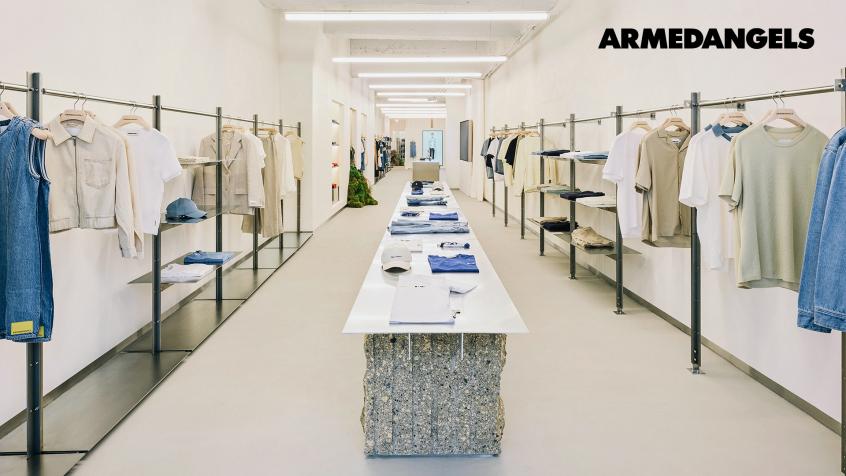Fashion PLM: how to choose the best software solution
Find out why you need a Fashion PLM

Why fashion PLM meets fashion challenges
Fashion is going through a turning point in its history. Professionals in the sector are facing unprecedented challenges: galloping inflation, a drop in purchasing power and the general increase in prices, both for raw materials and energy, not to mention production costs, logistics, up to the acquisition of customers on digital channels.
Add to that consumers who are increasingly vigilant about their environmental impact, regulatory constraints in terms of CSR and you have a fairly complete picture of the current and future challenges facing fashion brands and professionals.
If luxury and low-cost, the two sub-sectors of the fashion market, carry the latter at arm's length, with an estimated turnover of 1,500 billion dollars in 2022, and projections of nearly 2,000 billion in Looking ahead to 2030, the mid-range, which remains the main market, is still struggling.
A reality due to a structural inability of fashion to integrate technological innovations. However, like e-commerce, which is boosting the entire global economy, or the growing and undeniable importance of the influence of social networks in consumer purchasing decisions, digital is a determining factor of business growth.
This does not prevent that even today, in fashion companies, information systems (IS) worthy of the name, monitoring and product development software such as fashion PLM , remain in the minority. However, the advantages and benefits of PLM software in the fashion industry are numerous. But first, let's see what it is.
Fashion PLM: what is it exactly and why?
What exactly is PLM and why is such a solution so essential to fashion professionals?
A PLM - Product Lifecycle Management - is software that allows product-oriented companies to rely on a single platform as a source of all data related to a product , allowing 360° management of the development of this same product.
Thus, all the actors and stakeholders in the manufacturing process of said product share and find information that is constantly updated and easily accessible on a single platform, in real time.
The fashion market has specificities that make this type of solution even more essential. From its design to its sale, even now to its recycling (or second life), through its development, production and distribution, the life of a product can be very long and can be counted in quarters or even years.
It involves a myriad of professionals with both common and specific information needs.
At each stage of this production process , which can take up to two years between the moment the product is imagined and when it is put on the shelves, there is no doubt that the information has time to change or get lost!
To respond to these issues, a Fashion PLM is a software solution that allows you to manage and monitor the life of this product , from its genesis to its end of life. It centralizes all product data and allows permanent and total visibility, at 360°, for all players in the sector.
Fashion PLM: managing the product life cycle of fashion companies
What specificities specific to the fashion market must a Fashion PLM worthy of the name meet?
The issues :
- Allow to manage data related to a product, from its sketch to its shelving in a physical store or online
- Reduce the production time of the product in order to meet the expectations of consumers who are increasingly in a hurry and ultra-reactive, influenced by ubiquitous social networks, especially among young people
- Do with emails and multiple spreadsheets shared between collaborators which represent so many potential errors and obsolete information
- Losing information between all versions of transferred files
- Maintain communication between teams present on several continents and as many different time slots
- Find the right product information among a multiplication of platforms and software used by the different actors of the same product
- Bypass software incompatibility between older and newer
- Manage the complexity of the solutions in their approach and their ergonomics, representing as many obstacles in their adoption by all the actors of the production chain
- Avoid the bottleneck in the production phase due to a decorrelation of the level of information between the different teams
- Synchronize information related to a product in real time with other IT platforms using APIs
So many fashion-specific issues that find their solution in a fashion PLM.
A fashion PLM to increase productivity
The advantages and benefits of Fashion PLM software in SaaS mode
A fashion PLM at the heart of CSR issues
With a Fashion PLM like Kubix Link, fashion professionals have concrete means of action to increase their carbon footprint and promote their CSR . This subject is becoming highly strategic, both from the point of view of consumers, of the planet as such and also of countries which deploy an increasingly restrictive legal arsenal forcing fashion players to reduce their carbon footprint.
Therefore, the traceability of materials is (or must be) now part of the strategic axes of all fashion professionals.
For what ? Because a fashion PLM offers real-time monitoring of product data . In complete transparency, the fashion PLM solution gives customers the opportunity to monitor their sustainable development objectives: supplier compliance and certification, material composition and testing & certification, evaluation of the proportion of recycled or organic material, etc.
Transparency and traceability are the two essential elements of this strategy and a latest-generation fashion PLM allows all players in the supply chain to exchange and compile information allowing product cycle management.
A fashion PLM to increase productivity
Fashion is a particularly competitive market . In addition to analyzing and monitoring the actions of other players, particularly in their pricing strategy as enabled by the Retviews solution, fashion professionals must be able to react and produce products expected by consumers with complete agility. increasingly fickle and reactive.
With a Fashion PLM whose updates are automatic and not dependent on countless spreadsheets buried in archived emails, the design, product development and cost management processes within a single system make it possible to accelerate the launch of collections .
By acting on a single platform, internal and external teams exchange, communicate and cross-reference their product data for an enhanced product development process.
A Fashion PLM thus makes it possible to bring together the many exchanges necessary to develop new models, manage supplies and make the necessary adjustments as quickly as possible during the season. The loss of time linked to cascading emails and other spreadsheets with successive versions is therefore avoided.
Accelerate the launch of collections thanks to a fashion PLM that interacts with other software
With a PLM that communicates with other internal company systems (ERP, CMS, WMS, etc.); collaboration between all teams is strengthened, from birth to the end of the product.
Similarly, a PLM with an intuitive dashboard including an integrated reporting system will enable product development managers to manage workloads and allocate tasks through clearly defined workflows and task lists. and easily configurable.
The connection of computer systems thus contributes to making the data more usable information and shortens the production time of the collections accordingly.
An always up-to-date PLM solution
Fashion professionals can't afford to be constrained by their PLM. And yet, this is often what happens. Users find themselves circumventing the rules of a solution that is supposed to help them, because it is too restrictive, and returning to the failings described above: lost emails, duplicate spreadsheets, etc.
A good Fashion PLM must be able to adapt to an increasing development of the activity and favor it. Similarly, a user should not be forced to change systems or start from scratch if, for example, he/she has to manage new product categories.
A good PLM must be able to adapt and integrate PIM and DAM solutions
Related Content









